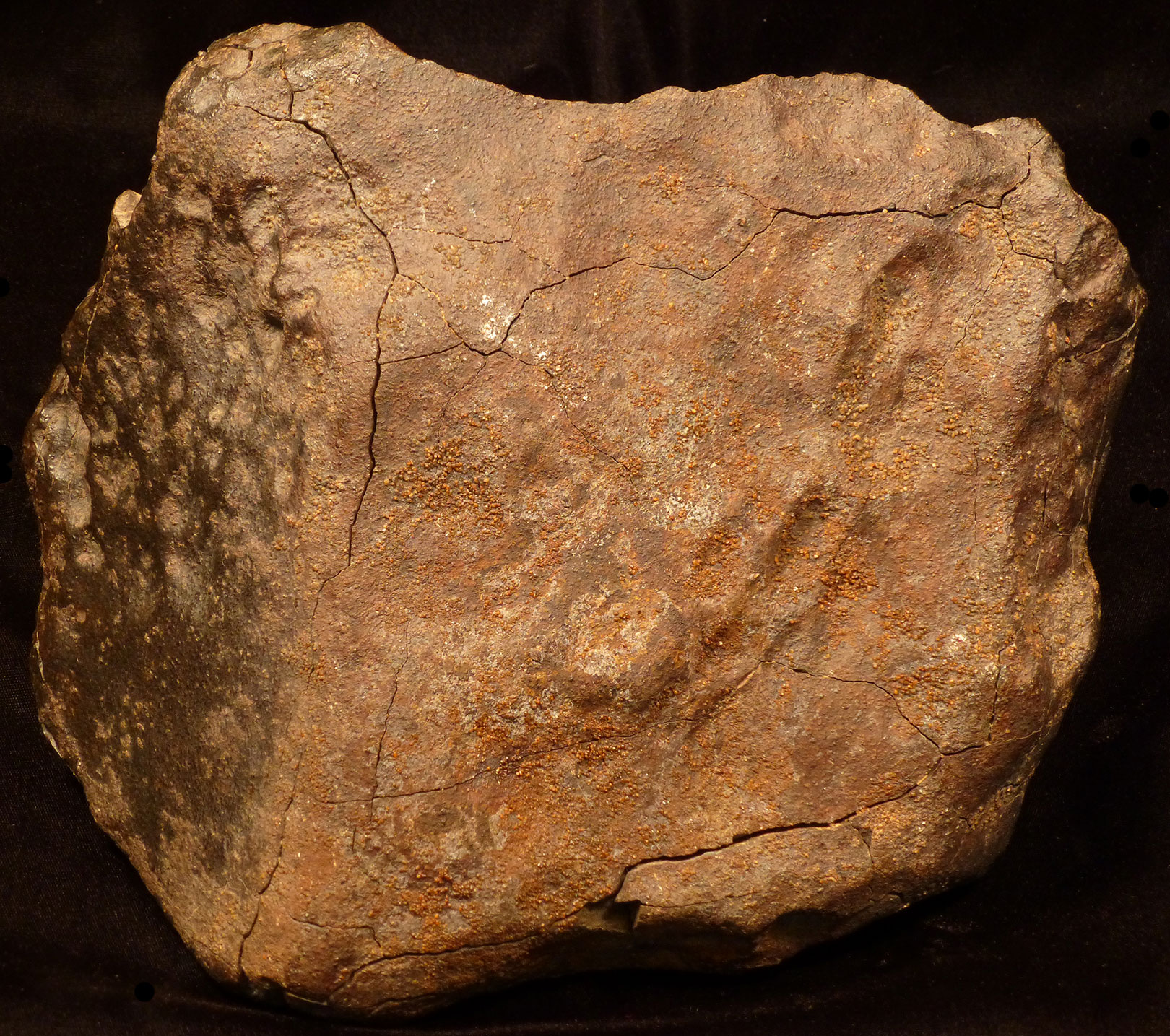The Treasury - Natural History


MASSIVE 17 KILOGRAM CHONDRITE FROM THE FORMATION OF THE SOLAR SYSTEM 11618. HUGE CHONDRITE METEORITE, North Africa, Sahara Desert, 4.56 billion years BP. Most probably from the NWA (North West Africa) 869 fall. 17 kilo, 37 lbs. 10 x 8 x 8.5 inches. A beautiful large and complete unbroken example with ~95% good fusion crust with some desert patina deposits. With a number of old (they have desert sand grains wedged in them) stable cracks. With good regmaglypts covering 4 of the 5 sides. Exceptionally rare. Meteorites this large are almost unheard of on the market. An extremely valuable example. Provenance: An extensive North Eastern collection. Found in the Sahara desert.
There are several classes of meteorites, the main being stony iron and chondrites which contain less iron and nickel and more closely represent the original unmodified material of the solar system. Chondrites were formed by the accretion of particles of dust and grit present in the primitive Solar System which gave rise to asteroids over 4.55 billion years ago. These asteroid parent bodies of chondrites are (or were) small to medium-sized asteroids that were never part of any body large enough to undergo melting and planetary differentiation. Dating using 206Pb/204Pb gives an estimated age of 4,566.6 ± 1.0 billion years, matching ages for other chronometers. Prominent among the components present in chondrites are the enigmatic chondrules, millimetre-sized spherical objects that originated as freely floating, molten or partially molten droplets in space; most chondrules are rich in the silicate minerals olivine and pyroxene. Embedded in this dust are presolar grains, which predate the formation of our solar system and originated elsewhere in the galaxy. The chondrites have distinct texture, composition and mineralogy and their origin continues to be the object of some debate.